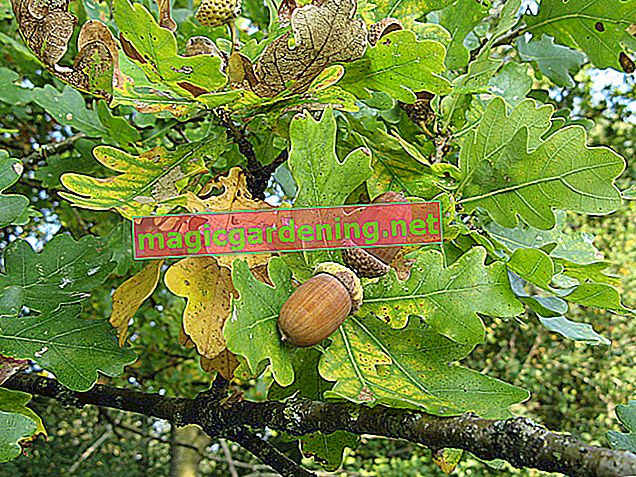
This is what the fruits of the oak look like
- Elongated nut
- About three inches long
- Medium brown color
- detachable fruit cup (cupula)
The acorn harvest season begins in September. The fruits just fall to the ground.
also read
- Are acorns really poisonous?
- Planting an acorn - this is how the fruit becomes a tree
- The most famous species of the oak tree in Germany
The budding takes place in the next year. Acorns need a very low temperature period before they begin to germinate.
Recognize ripe acorns
If you want to collect acorns in the forest to grow your own oak tree, make sure that they are ripe.
The ripe fruit of an oak can be recognized by the fact that it can be easily removed from the cap.
Ripe acorns that are suitable for sowing have a medium brown, shiny outer skin. They are firm and have no holes.
Pulling an oak tree from acorns
The fruit of the oak is best picked directly from the tree and stored in the refrigerator for a long time.
Then they are planted in a pot or in the field.
Alternatively, acorns that have already germinated can be dug up in the forest in spring.
Do not eat acorns raw
Acorns are very nutritious, but humans cannot enjoy them raw. Because of their high content of tannic acid, they are poisonous and cause severe gastrointestinal complaints.
The tannins can be removed by soaking. Acorns can be processed for various purposes.
In times of need, acorns were ground into flour or roasted as a substitute for coffee.
Acorns as pig feed
Pigs and forest animals, on the other hand, tolerate raw acorns well.
In the past, the fruit of the oak was therefore used for pig fattening. The pigs were driven into the forest in autumn and ate the acorns there.
The acorns should make the pork very aromatic. In Mediterranean countries, pigs are still fattened with the fruits of the cork oak.
Tips & Tricks
The bark of oaks is often used in natural medicine. It contains anti-inflammatory agents. Extracts from the bark are used as a bath additive for skin rashes and as a tea to treat stomach problems.








